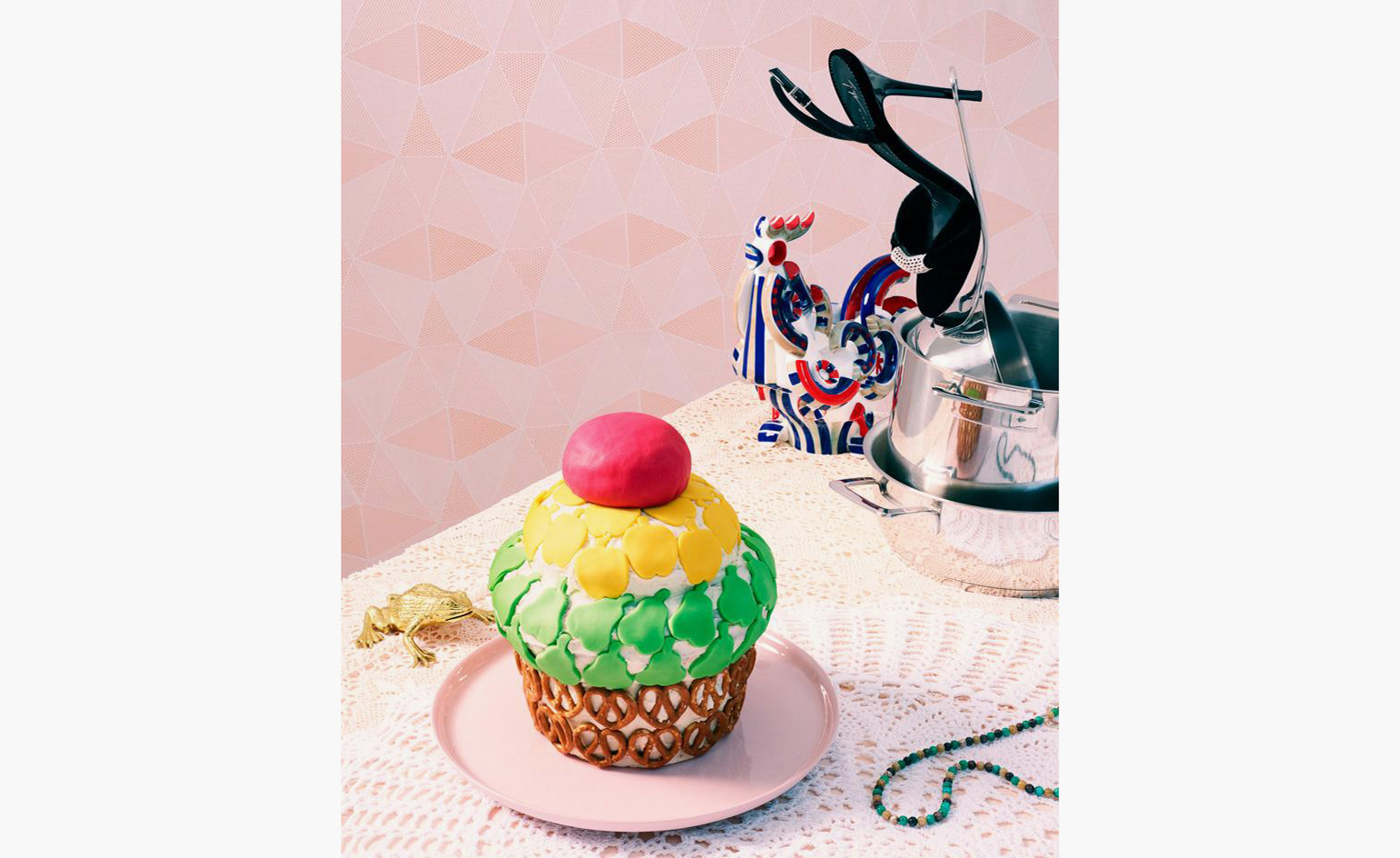
The original recipe for Joana Vasconcelos’ fruit cake, part of her Treats sculpture series, is not for the faint of will. Taking two months to make, it requires 879 plastic sand moulds, in the shape of strawberries, grapes, pears and pretzels, a stainless steel frame comprising 24 hoops and 52 sticks, and the services of an architect, a carpenter and two assistants. Fortunately, for those of us who prefer our patisserie on a more manageable scale, there’s an edible version that can be prepared in a matter of hours. ‘Serve your fruit cake outside, on a sunny day, or inside, with strong illumination,’ says the artist.
Joana Vasconcelos’ fruit cake
You will need
20cm gint cupcake mould, which comes in three pieces
Small pineapple- and pear-shaped cookie cutters (or your choice of shapes)
Ingredients
1 tbs butter, melted
350g plain flour
2 1/2 tsp baking powder
1/2 tsp bicarbonate of soda
1/2 tsp salt
340g unsalted butter, softened
340g caster sugar
6 eggs
2 tsp vanilla paste
2 tbs yogurt
6 tbs milk
For the buttercream:
150g unsalted butter, softened
300g icing sugar
1 tsp vanilla paste
2-3 tbs milk
350g fondant icing
Red, yellow and green food colouring gel
Approx 80g mini pretzels
Method
Brush all three pieces of the cupcake mould lightly with melted butter (the dome-shaped ‘filling’ section will be used as a mould for the cherry on top of the cake).
Preheat the oven to 170C.
Measure the flour, baking powder, bicarbonate and salt into a bowl, mix well, and set aside.
Cream the butter and sugar together until pale and fluffy. Add two of the eggs and a tablespoon of the flour mixture and beat until the egg is fully incorporated. Add another two eggs and another tablespoon of flour and beat. Add the remaining eggs and the vanilla paste and beat, then beat in the rest of the flour mixture. Finally, beat in the yogurt and the milk to loosen the mixture to a dropping consistency.
Spoon the batter into the cake moulds, smooth the tops and place in the oven. After 20-25 minutes, check the smallest mould by inserting a skewer in the centre of the cake – if done, it should emerge clean, so remove from the oven. After 40-50 minutes, check the medium-sized mould, and the largest mould after 60-70 minutes. Leave the cakes to cool completely in their moulds on a wire tray.
Make the buttercream by beating together the softened butter and the icing sugar until pale and fluffy. Beat in the vanilla and gradually add milk, one tablespoon at a time, until the buttercream is of a soft but firm consistency. Set aside.
Divide the fondant icing into three pieces, one approx 150g and the other two 100g each. Take the large 150g piece, flatten it slightly and place a large blob of green colouring gel in the centre. Fold the icing over the colour, then knead the colouring gel through the icing with your hands until the colour is even. Repeat the process with the other two pieces of fondant and the red and yellow colours. Roll out the green fondant and press out pear shapes with the cookie cutter. Make apple shapes with the yellow icing.
Stack the cakes, one on top of the other, to make the cupcake shape. Trim them as required, shaving off slivers until you have the desired shape. Stick the middle section to the base with buttercream. Roll out the remaining red fondant to a circle large enough to cover the dome-shaped cake for the cherry on top. Wrap the ‘cherry’ in the red fondant and set aside.
Using a palette knife, spread buttercream evenly over the stacked base and middle sections. Press pretzels onto the lower part of the base section. Press the pears and apples onto the middle and upper sections. Finally, put the cherry on the top of the cake.
The original recipe for Joana Vasconcelos’ Fruit Cake, part of her Treats sculpture series
Ingredients
1 artist
1 sketchbook
1 Bic ink pen
1 architect
1 carpenter
2 assistants
24 stainless steel hoops
52 stainless steel sticks
94 red plastic sand moulds (strawberries)
87 white plastic sand moulds (grapes)
299 green plastic sand moulds (pears)
399 yellow plastic sand moulds (pretzels)
Duration: 2 months
Method
Observe how cooks bake and decorate their dishes.
Draw your own version of a cupcake.
Have the architect transform your sketch into a design, to scale.
Have the carpenter create 24 stainless steel hoops and 52 sticks.
At the studio, assemble the inner structure to support the sand moulds.
Order a set of different plastic sand moulds.
Layer by layer, colour by colour and shape by shape, attach the sand moulds with the sticks. Start with the base, attaching 399 pretzel plastic sand moulds. It should be 1,257m high. Then add a 60cm layer of 299 green pears, then 30cm of 87 grapes, and finally approximately 59cm of 94 red plastic sand moulds of strawberries.
Clean and polish.
Either serve your Fruit Cake outside, on a sunny day, or indoors, with strong illumination.
A version of this story originally featured in the June 2018 issue of Wallpaper* (W*231)
INFORMATION
A site-specific installation by Joana Vasconcelos is on view at Jupiter Artland from 12 May – 30 September. For more information, visit the Jupiter Artland website
Receive our daily digest of inspiration, escapism and design stories from around the world direct to your inbox.
TF Chan is a former editor of Wallpaper* (2020-23), where he was responsible for the monthly print magazine, planning, commissioning, editing and writing long-lead content across all pillars. He also played a leading role in multi-channel editorial franchises, such as Wallpaper’s annual Design Awards, Guest Editor takeovers and Next Generation series. He aims to create world-class, visually-driven content while championing diversity, international representation and social impact. TF joined Wallpaper* as an intern in January 2013, and served as its commissioning editor from 2017-20, winning a 30 under 30 New Talent Award from the Professional Publishers’ Association. Born and raised in Hong Kong, he holds an undergraduate degree in history from Princeton University.
-
 Stay at this 17th-century farmhouse featured in ‘Hamnet’
Stay at this 17th-century farmhouse featured in ‘Hamnet’Inspired to live like a Tudor? Cwmmau Farmhouse, available as a holiday let through the National Trust, stars as the childhood home of Shakespeare’s wife, Agnes
-
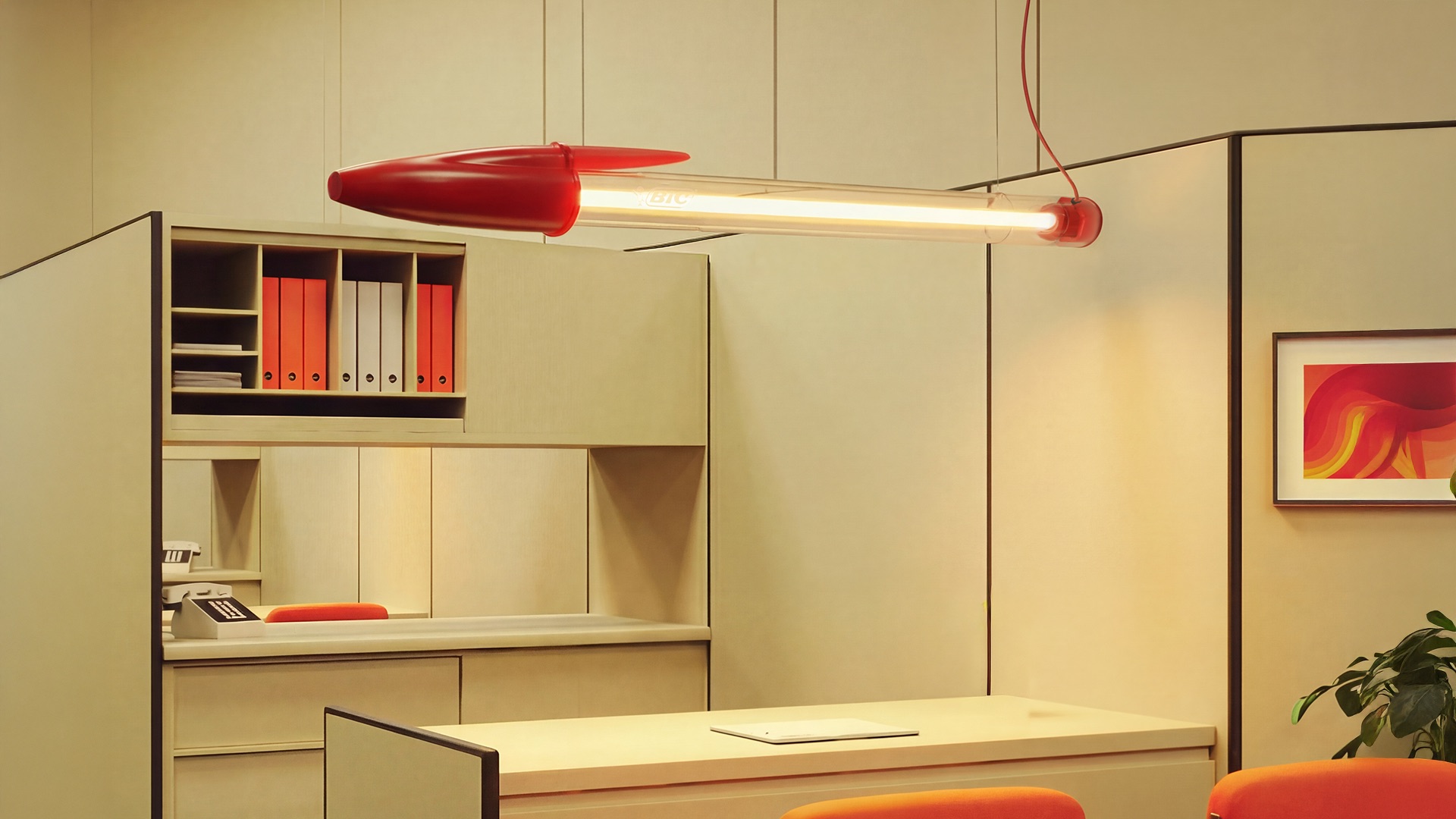 Remember the Bic Biro? It’s now a larger-than-life lamp
Remember the Bic Biro? It’s now a larger-than-life lampSeletti honours the iconic Bic pen on its 75th anniversary with a gigantic, luminous reproduction of its design
-
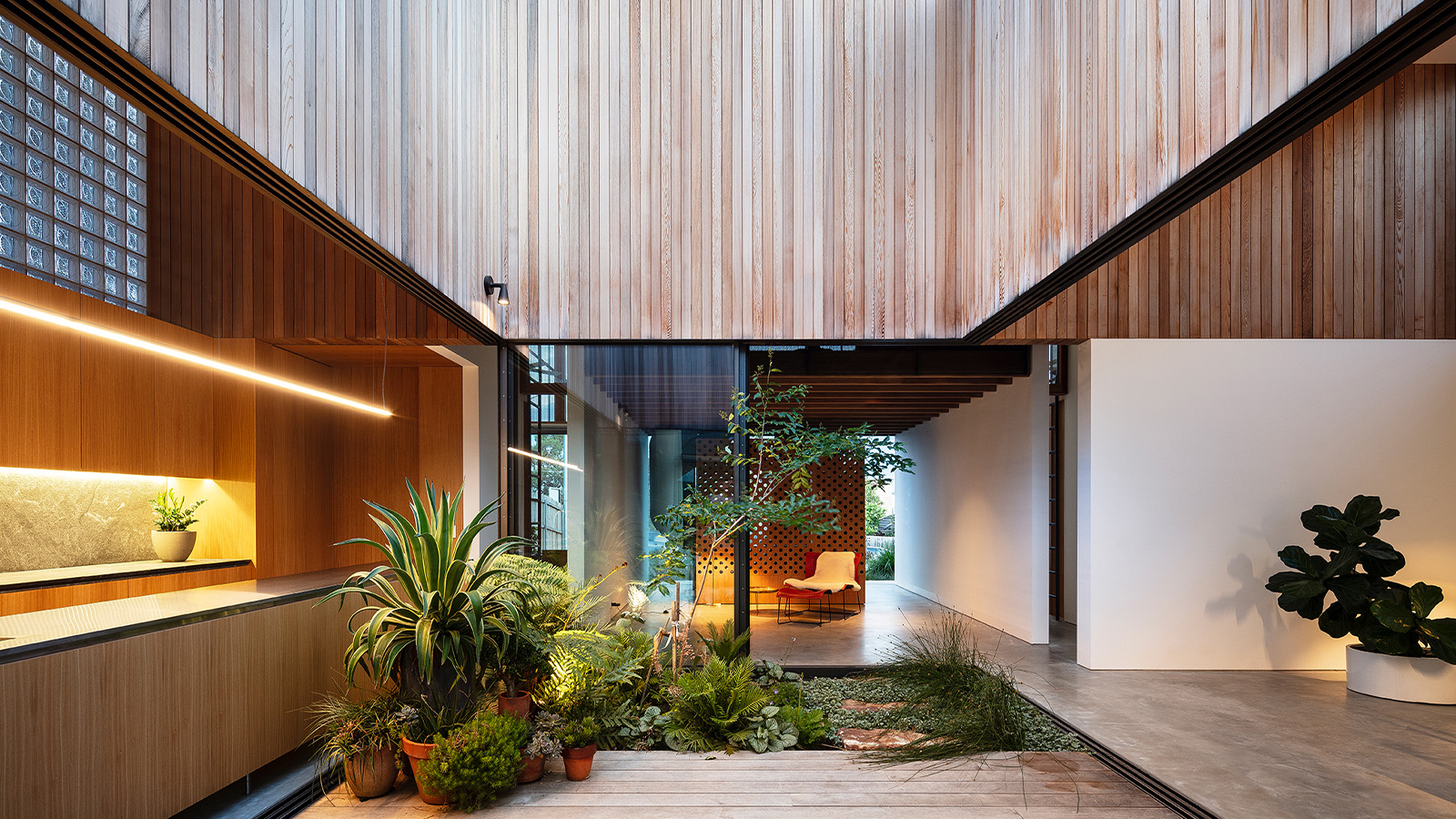 Tour these soothing courtyard homes around the world
Tour these soothing courtyard homes around the world‘Courtyard Homes’, a new book published by Phaidon, explores some of the most innovative interpretations of the genre, from Hawaii to south-east London
-
 Artist’s Palate: Cerith Wyn Evans’ recipe for Laverbread
Artist’s Palate: Cerith Wyn Evans’ recipe for LaverbreadDeep-dive into Cerith Wyn Evans’ gleaming, gelatinous recipe for Laverbread, as seen in this month’s Artist’s Palate feature, a Wallpaper* homage to our favourite contemporary art
-
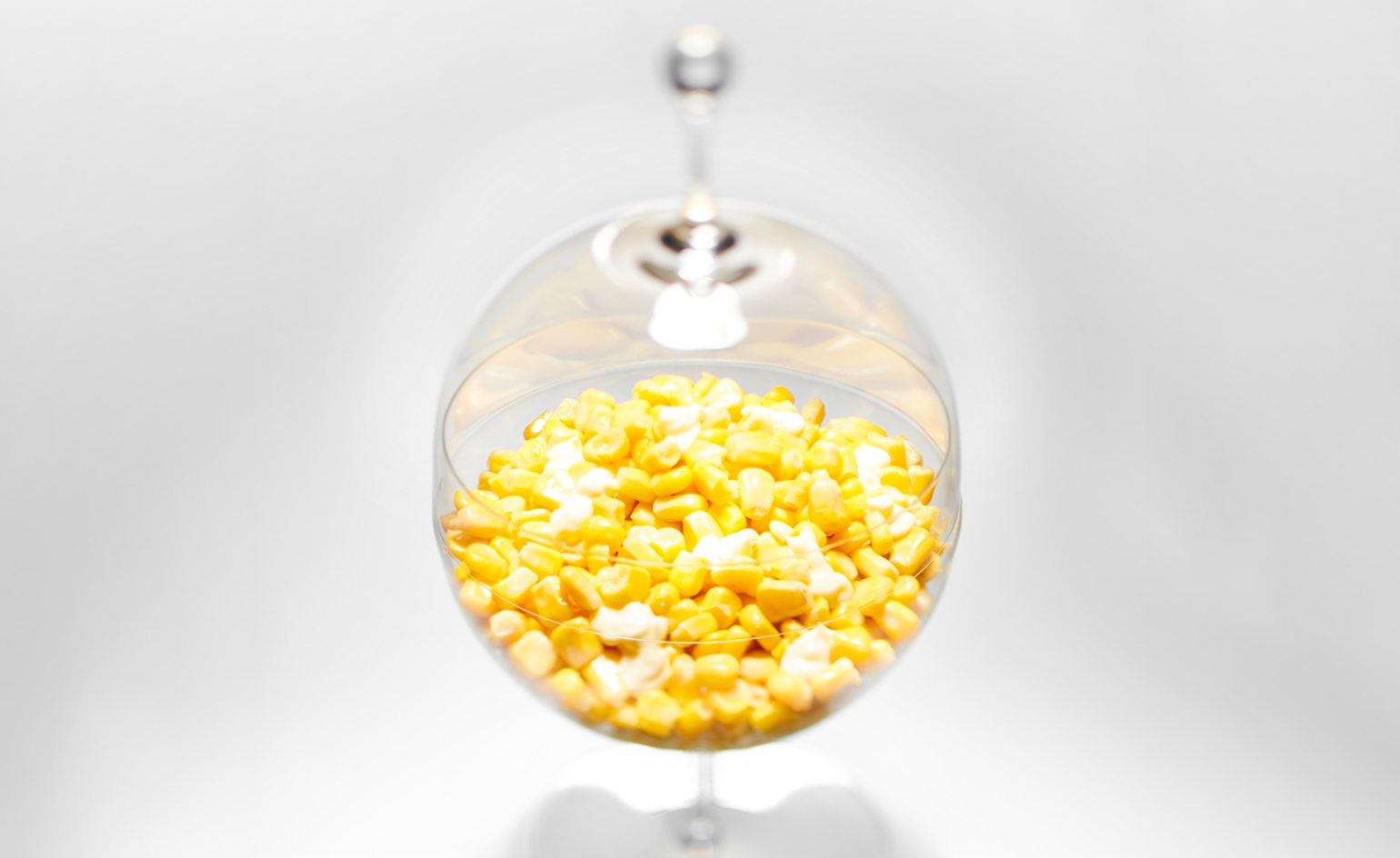 Helen Pashgian’s recipe for summer corn
Helen Pashgian’s recipe for summer cornTry Light and Space artist Helen Pashgian’s characteristically precise recipe for ‘summer corn’, as seen in this month’s Artist’s Palate feature, a Wallpaper* homage to our favourite contemporary art
-
 Artist’s Palate: Dolce & Gabbana’s pasta alla Norma
Artist’s Palate: Dolce & Gabbana’s pasta alla Norma‘We like the simplest recipes of the Sicilian tradition,’ say designers Domenico Dolce and Stefano Gabbana of their choice of pasta alla Norma for this month’s Artist’s Palate. Here, the recipe to make the definitively Italian dish yourself
-
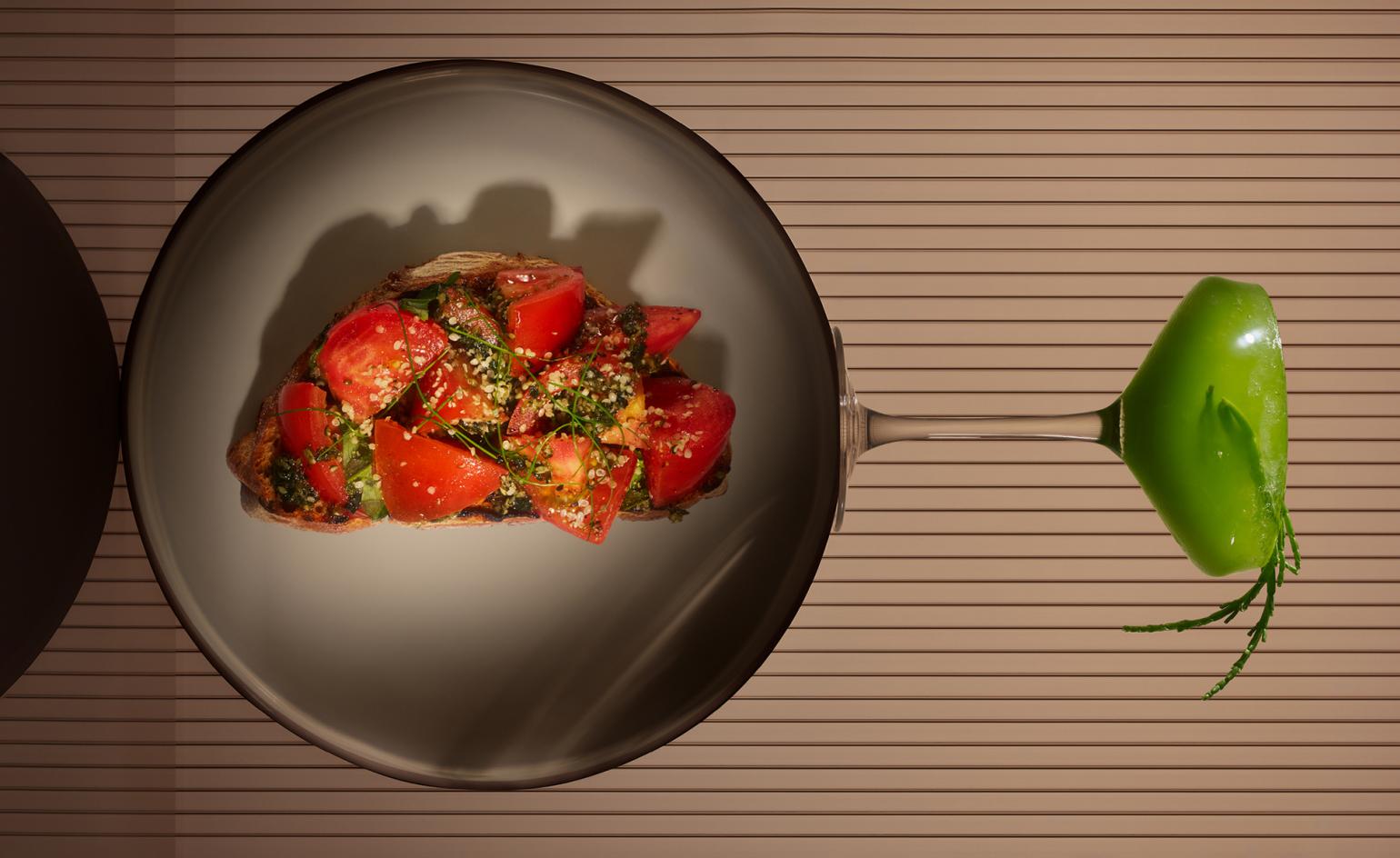 Artist’s Palate: Cooking Sections’ ‘Back to Earth’ tomatoes on toast
Artist’s Palate: Cooking Sections’ ‘Back to Earth’ tomatoes on toastEnjoy Cooking Sections’ tomatoes on toast (pictured with a Seaweed Seeper), which is served at The Magazine alongside chickpea tabbouleh, and rhurbarb and quinoa cake. As seen in this month’s Artist’s Palate feature, a Wallpaper* homage to our favourite contemporary art
-
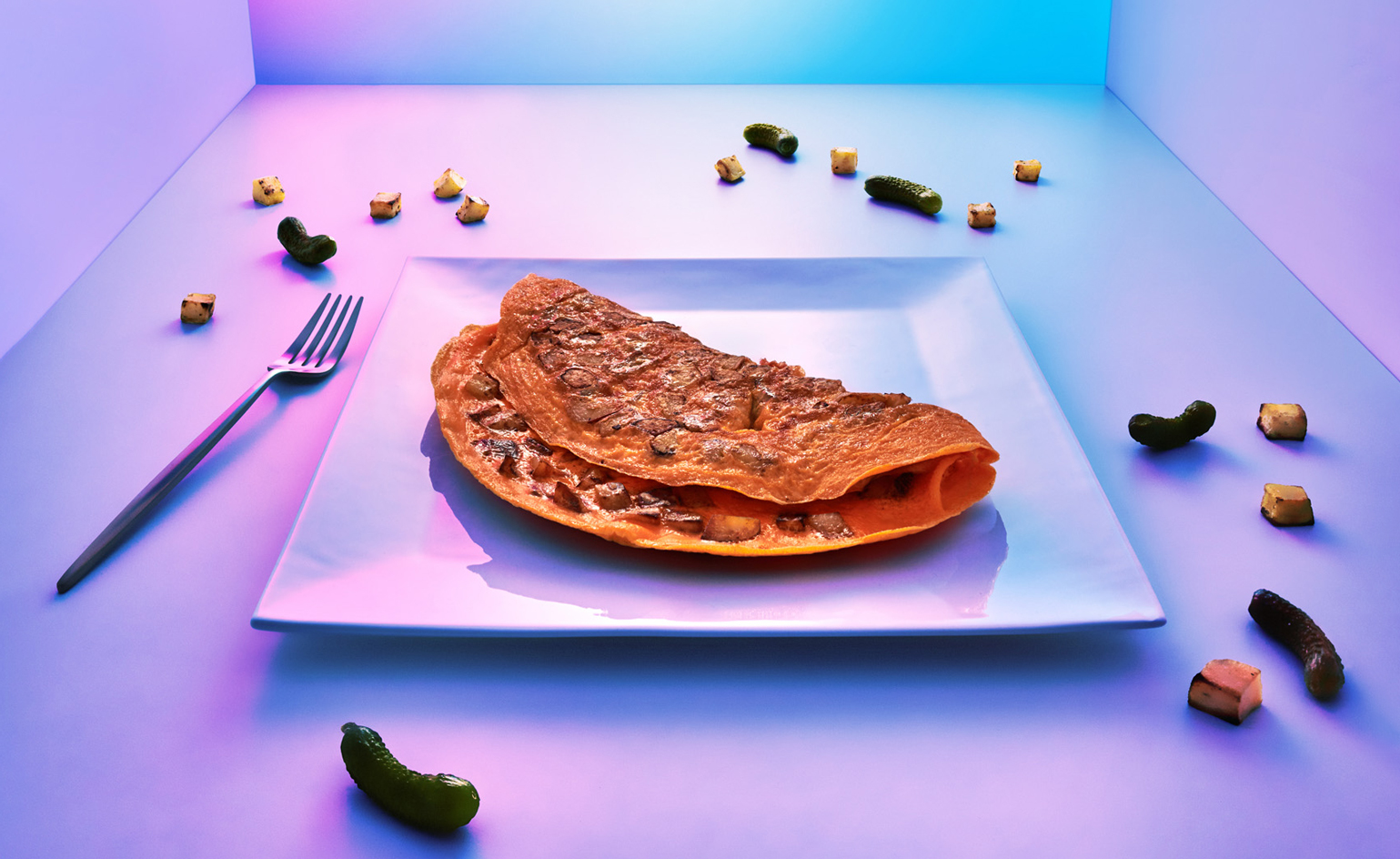 Artist’s Palate: Dominique Gonzalez-Foerster’s recipe for omelette aux frites
Artist’s Palate: Dominique Gonzalez-Foerster’s recipe for omelette aux fritesTravel to a new dimension with Dominique Gonzalez-Foerster’s recipe for omelette aux frites. As seen in this month’s Artist’s Palate feature, a Wallpaper* homage to our favourite contemporary art
-
 Artist’s Palate: Shilpa Gupta’s recipe for methi thepla
Artist’s Palate: Shilpa Gupta’s recipe for methi thepla‘This simple homemade bread is my childhood favourite comfort food,’ says Mumbai-based artist Shilpa Gupta of her methi thepla recipe for this month’s Artist’s Palate feature, a Wallpaper* homage to our favourite contemporary art
-
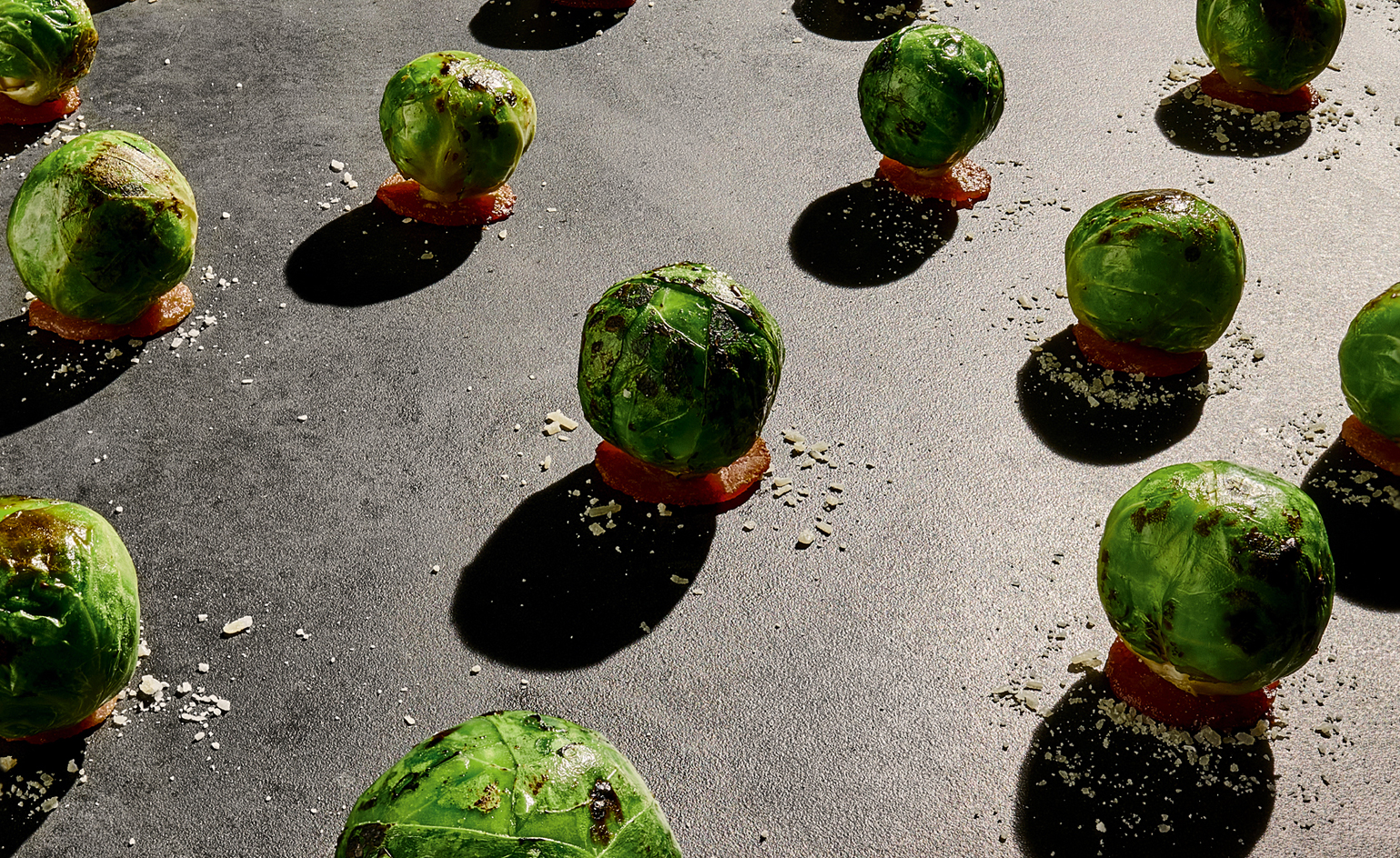 Bosco Sodi’s recipe for Brussels sprouts
Bosco Sodi’s recipe for Brussels sproutsGather round for Bosco Sodi’s simple yet imposing recipe for Brussels sprouts.
-
 Mickalene Thomas’ recipe for duck with chimichurri
Mickalene Thomas’ recipe for duck with chimichurriTry Mickalene Thomas’ take on a much-cherished recipe for duck with chimichurri. As featured in our monthly Artist’s Palate series, a Wallpaper* homage to our favourite contemporary art